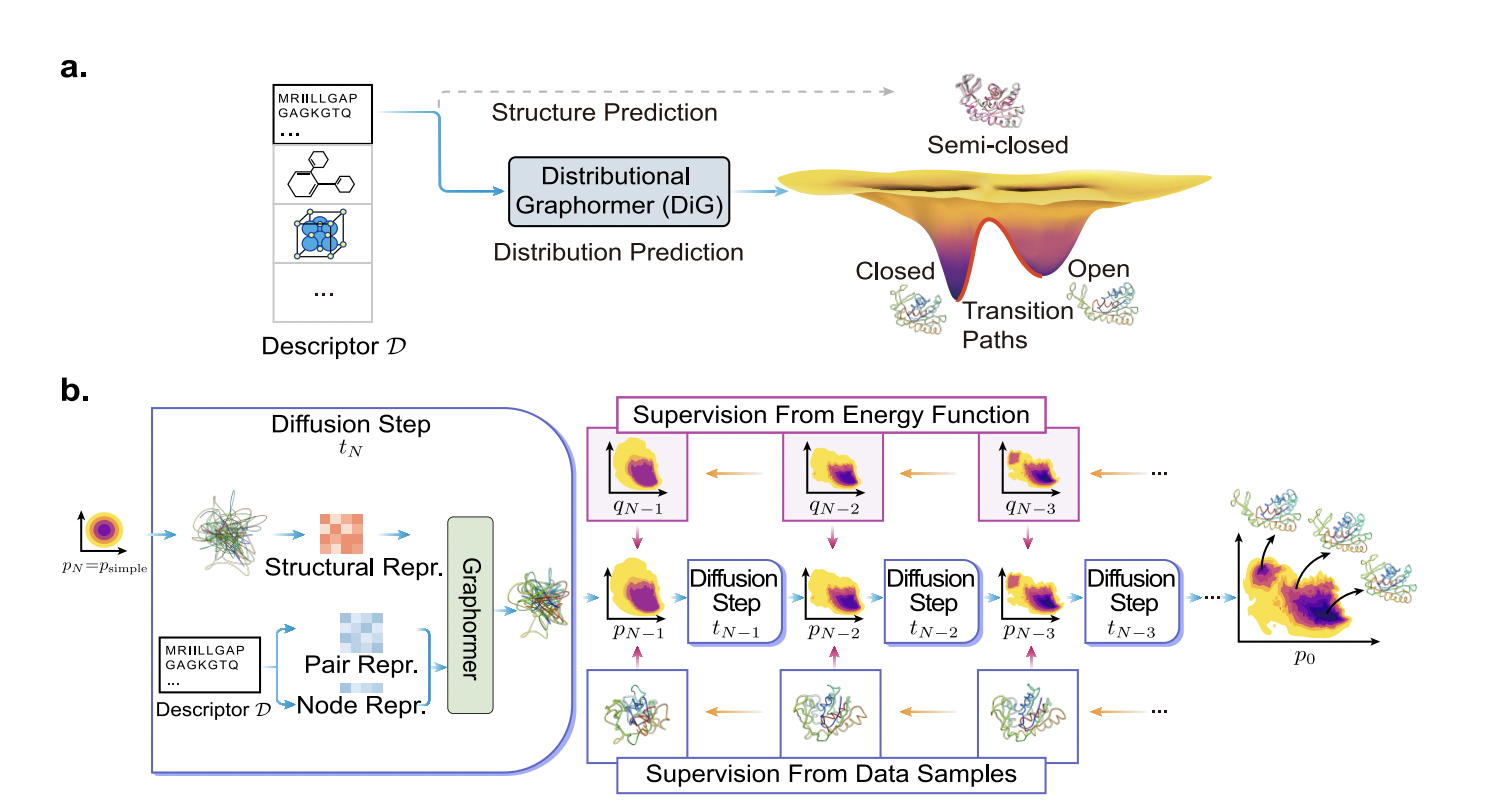
The structure of a molecule determines its properties and functions. This is why structure prediction is an important problem in molecular science. Molecular scientists are appreciating the groundbreaking accuracy of deep learning approaches like AlphaFold and RoseTTAFold in identifying the most likely structures for proteins from their amino acid sequences. However, structural prediction can only provide a partial picture of a protein’s function, and this method provides only a single snapshot.
Recent research from Microsoft provides Distributional Graphormer (DiG), a new deep learning framework for predicting protein structure based on equilibrium distribution. He hopes to solve this fundamental problem and give molecular science a boost. DiG is a breakthrough in modeling ensembles based on equilibrium distributions, rather than just one. Due to its ability to anticipate distributions, statistical mechanics and thermodynamics, which govern molecular systems at the microscopic level, can be applied to their macroscopic aspects.
DiG improves on their previous work, Graformer, a general-purpose graph transformer that can accurately describe molecular structures, to provide a new approach to distribution prediction. DiG, an improved version of Graphormer, can now directly predict target distribution from key molecular descriptors using deep neural networks, a powerful new capability.
It is based on the concept of simulated annealing, a well-established technique in thermodynamics and optimization that has inspired the creation of diffusion models that have led to significant advances in the field of Artificially Generated Content (AIGC) in recent years. By modeling an annealing process, a simple distribution is gradually refined to build a complex distribution allowing it to explore and settle into the most probable states. DiG is a deep learning framework for molecular systems that simulates this procedure. Diffusion models, originating in statistical mechanics and thermodynamics, are often used as the basis for AIGC models.
Using Graformer to convert a simple distribution into a complex distribution, DiG relies on diffusion. The data or information used to train DiG is flexible. By minimizing the difference between energy-based probabilities and DiG-predicted probabilities, the energy functions of molecular systems can be used by DiG to drive transformation. To teach DiG, this method can draw on existing knowledge of systems.
Through a series of molecular sampling activities covering a wide variety of molecular systems, including proteins, protein-ligand complexes and catalyst-adsorbate systems, the team demonstrates the efficacy and promise of DiG. The results show that DiG not only efficiently and economically produces realistic and varied molecular structures, but also provides estimates of state densities, which are essential for calculating macroscopic attributes using statistical mechanics.
The team believes that DiG represents a major breakthrough in the quantitative analysis of microscopic molecules and the prediction of their macroscopic characteristics, paving the way for many fascinating new lines of investigation in molecular science.
Check out thePaperANDReference article.Don’t forget to subscribeour 26k+ ML SubReddit,Discord channel,ANDEmail newsletterwhere we share the latest news on AI research, cool AI projects, and more. If you have any questions regarding the above article or if you have missed anything, please do not hesitate to email us atAsif@marktechpost.com
Check out 100s AI Tools in the AI Tools Club
Dhanshree Shenwai is a software engineer and has good experience in FinTech companies covering Finance, Cards & Payments and Banking with keen interest in AI applications. He is enthusiastic about exploring new technologies and advancements in today’s changing world, making everyone’s life easier.
#Microsoft #Research #introduces #deep #learning #framework #called #Distributional #Graphormer #DiG #predict #equilibrium #distribution #molecular #systems
Image Source : www.marktechpost.com
